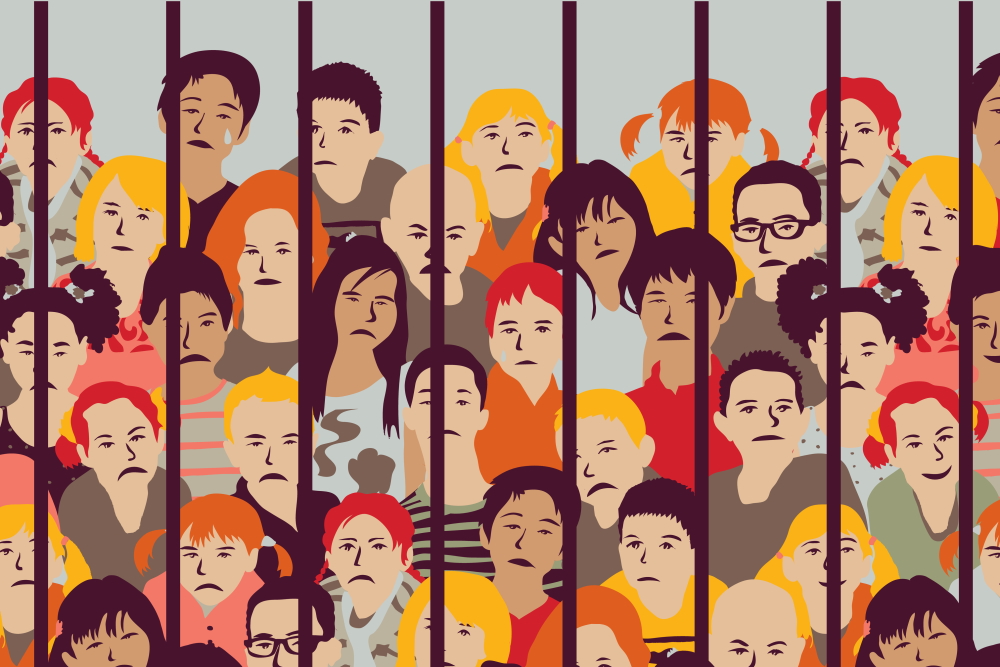Source
Summary
Washington, D.C. – Fight Crime: Invest in Kids released their report “Costly, Punitive Juvenile Justice Approaches Undermine Healthy Adolescent Development,” during a Zoom briefing that brought together experts to discuss the urgent need for reform in the juvenile justice system. One key highlight:
Rather than helping to fix juvenile crime in America, our current justice system often makes it worse.
The report shows that our juvenile justice system often fails to consider the realities of adolescent development. Adolescents, unlike adults, are still maturing cognitively, meaning they lack the capacity to effectively self-regulate, plan for the future, or control impulses.
Punitive measures fail
This lack of full maturation means that punitive approaches, which treat juvenile offenders as if they have the same capacities as adults, are fundamentally flawed.
One punitive measure the report highlights as being particularly detrimental is detainment, as 70% of the more than 700,000 youth detained each year are held for nonviolent offenses. Detention separates young people from their families and support systems — hampering their educational development and increasing recidivism.
On top of these impacts that can have negative effects on the adolescent and their community, detainment is also a financial burden on taxpayers.
Youth detention costs on average $214,620 per youth per year.
Further costs to society and taxpayers are incurred down the road with lower high school graduation rates and higher adult incarceration rates.
Possible solutions were discussed by a panel of professionals with a deep understanding of the juvenile justice system. Amy Kalb, director of the Shelby County Youth and Family Resource Center, Terry Fawcett, director of Restorative Justice/Juvenile Diversion, Pine County, Minn., Reese Frederickson, attorney, Pine County, Minn., and Tawana Bandy-Fattah, research director, Council for a Strong America spoke at the event. These leaders provided insights into the detrimental effects of current juvenile justice practices and presented effective alternatives.
What alternatives are effective?
During the discussion, Amy Kalb, director of the Shelby County Youth and Family Resource Center, highlighted the successes of the Center in linking youth with community resources to reduce juvenile crime.
“We have a Memoriam of Understanding with the Memphis Police Department. When a police officer comes in contact with a youth who has committed one of 14 low-level offenses, the officer gives the youth a citation in lieu of transport, which allows them to come to the assessment center [later] with their parent or guardian.
[Related: To end the age of incarceration, three communities pioneer a developmental approach]
When the youth complies, the summons goes away and the youth has no contact with the juvenile justice system,” said Kalb.
Terry Fawcett, director of Restorative Justice/Juvenile Diversion, Pine County, Minn., shared similar success stories with Pine County’s C5 Restorative Justice Program. It focuses on using developmentally appropriate practices to help curb juvenile delinquency.
[Related: Breaking walls, building bridges: A call for restorative justice in school discipline]
“By getting families and victims involved in this system, we have seen a reduction in recidivism rates and a high completion rate among those who take part in our program. Out of those who completed the C5 program, only 12 percent reoffended after one year, and 63 percent of those offenses were misdemeanors,” said Fawcett.
Josh Spaulding, national director of Fight Crime: Invest in Kids, emphasized the need for a paradigm shift in the juvenile justice system.
“Our current system fails to account for the developmental needs of adolescents. It’s time we adopt approaches that support healthy development and reduce recidivism,” he said.
Tawana Bandy-Fattah, research director at Council for a Strong America, added, “By understanding the unique developmental stage of adolescence, we can implement interventions that foster long-term positive outcomes for youth and communities.”
As the report states:
Diversion and restorative justice interventions can reduce recidivism and improve public safety.
The importance of intervention is emphasized by Sheriff Walter McNeil, from Leon County, Fla., quoted in the report stating, “Early intervention to provide youth with positive activities and role models can reduce negative influences that can lead to criminal behavior. We need to focus on prevention and intervention initiatives targeting youth in our community.”
The report’s release underscored the critical need for developmentally appropriate, non-punitive interventions that not only support the healthy development of adolescents but also enhance public safety and reduce costs.
View Youth Today's Report Library




























